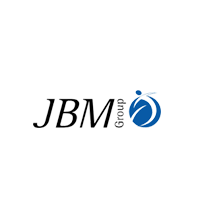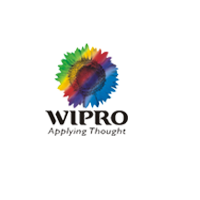The Revit MEP Course
The following topics will be covered during the course, at Xtrude:
- Energy Analysis
- Understanding the Workflow
- Managing the "I" in BIM
- Introduction and Methodology
- Load a Title block Family and Create Sheets
- Wrapping Up a Project Setup
- The Importance of Project Collaboration
- Space Elements
- Conceptual Underpinnings of Revit MEP
- Building Information Modeling
- Unit Conventions
- Basic Project Setup
- Revit MEP Key Concepts
- Exploring an Existing Project
- User Interface
- Training the Architectural Model
- Purging the Architectural Model
- Creating a New Project
- Linked Project Settings
- Selection Methods
- The Almighty Tab Key
- Understanding the User Interface
- Right-Clicking
- Navigating in Views
- Create the Building Model
- Copying Title blocks
- Panel Schedules
- Modify a Panel Schedule Template
- Create an Electrical Equipment Schedule
- Electrical Distribution Basics
- Load Classifications and Demand Factors
- Zones
- Energy Analysis
- Piping Systems
- Plumbing and Pipe Settings
- Boiler Room Piping - Semi-Automatic Approach
- Boiler Room Piping - Manual Approach
- Electrical Systems
- Placing Electrical Equipment
- Mechanical Systems
- Mechanical Settings
- Creating a Ceiling Plan View for Coordination
- Conduit
- Checking Connections in System Browser
- Create the Main Service Entrance
- Copy Equipment to a Level
- Electrical Fixtures
- Circuiting Mechanical Equipment
- Other Device Types
- Cable Tray
- Circuiting Equipment
- Placing Air Terminal Devices
- Placing Mechanical Equipment
- Ductwork
- Additional Ductwork Tools
- Create Lighting Views
- Modifying Light Fixture Types
- Lighting Switches
- Switch Systems
- Circuit the Receptacles
- Wire Tags
- Define a Special Purpose Receptacle
- Distribution Systems
- Lighting Fixture Annotations
- Electrical Settings
- Construction Documents and Coordination
- Printer Driver Configuration
- Troubleshooting Printing
- Publish to Buzz saw
- Export to CAD
- Export a DWF File
- Publishing Tools
- Additional Detailing Techniques
- Working with Schedules and Tags
- Create and Modify Schedule Views
- Editing the Model
- Working with Tags
- Room and Room Tags
- Create the Building Model
- Querying Data
- Add a Color Scheme
- Working with Area Plans
- Ceiling Plans and Interior Elevations
- Working with Walls
- Working with Elevation Views
- Creating Section Views
- Schedule Views
- Sheet Views
- Drafting Views
- Creating Ceiling Elements
- Creating Interior Elevations
- Printing, Publishing, and Exporting
- Print Setup
- Revit Architecture Quick Start
- Create a Small Building
- Working in Other Views
- Edit in Any View
- Round Out the Project
- Training Output
- Creating a Building Layout
- Detailing and Annotation
- Detailing in Revit
- Annotation
- Drafted Details
- Working with Legacy Details
- Column Grids and Structural Layout
- Linking and Importing
- Coordination Monitor and Interference Check
- Understanding Worksets
- Enabling Worksharing
- Working with Grids & Columns
- Adding Core Walls
- Edit and Create Family Types
- Customizing Families
- Building Custom Families
- Building Parametric Families
- Adding Floors
- Creating Structural Framing
- Vertical Circulation
- Floors, Landings, and Shafts
- Ramps and Elevators
- Floors and Roofs
- Creating Roofs
- Worksharing
- Family Libraries
- Family Strategies
- Accessing Families in a Project
- Accessing Libraries
- Stairs and Railings
- Commercial Core Layout
- Editing Roofs
- Creating Floors
- Commercial Project Roof
- Working with Families
- Kinds of Families
Why to join Xtrude for Revit MEP Training?
- Our Revit MEP training is an industrial training institute with arrangement to current IT industry.
- Beside in the midst of technical training and lessons, we take free sessions for individuality growth vocal English, group dialogue, mock interview and personality skills to increase the scaling point of flexibility in students.
- We also conduct no cost personality development and presentation seminars.
- Our class materials include books, and soft copies of tutorials in the form of PDFs, sample papers, industrial and HR interview questions and projects available on our website.
- Mentors giving Revit MEP training not only help students in finishing live projects but also provide them with session on interview training along with appointment support.
- We have the most modern I.T laboratory equipped with state-of-the-art infrastructure.
- Our lab is open 365 days in a year. Students, according to their convenience can make use of the lab for carrying out their projects and also to do their technical assignments.
- We offer the most excellent Revit MEP training class modules throughout the Revit MEP training. Also, students get to learn Revit MEP course with placement assistance.
Course Syllabus
- Introduction and Methodology
- Conceptual Underpinnings of Revit MEP
- Building Information Modeling
- Revit MEP Key Concepts
- Exploring an Existing Project
- User Interface
- Unit Conventions
- Understanding the User Interface
- Right-Clicking
- Navigating in Views
- Selection Methods
- The Almighty Tab Key
- Settings
- Basic Project Setup
- Preparing the Architectural Model
- Purging the Architectural Model
- Creating a New Project
- Linked Project Settings
- Copying Titleblocks
- Load a Titleblock Family and Create Sheets
- Wrapping Up a Project Setup
- Energy Analysis
- Understanding the Workflow
- Managing the "I" in BIM
- The Importance of Project Collaboration
- Space Elements
- Zones
- Energy Analysis
- Mechanical Settings
- Creating a Ceiling Plan View for Coordination
- Placing Air Terminal Devices
- Placing Mechanical Equipment
- Ductwork
- Additional Ductwork Tools
- Plumbing and Pipe Settings
- Boiler Room Piping - Semi-Automatic Approach
- Boiler Room Piping - Manual Approach
- Placing Electrical Equipment
- Circuiting Equipment
- Checking Connections in System Browser
- Create the Main Service Entrance
- Copy Equipment to a Level
- Create Lighting Views
- Modifying Light Fixture Types
- Lighting Switches
- Switch Systems
- Electrical Fixtures
- Circuit the Receptacles
- Define a Special Purpose Receptacle
- Distribution Systems
- Conduit
- Circuiting Mechanical Equipment
- Other Device Types
- Cable Tray
- Lighting Fixture Annotations
- Panel Schedules
- Modify a Panel Schedule Template
- Create an Electrical Equipment Schedule
- Electrical Distribution Basics
- Load Classifications and Demand Factors
- Electrical Settings
- Detailing and Annotation
- Detailing in Revit
- Annotation
- Drafted Details
- Working with Legacy Details
- Additional Detailing Techniques
- Create and Modify Schedule Views
- Editing the Model
- Working with Tags
- Room and Room Tags
- Querying Data
- Add a Color Scheme
- Working with Area Plans
- Creating Ceiling Elements
- Creating Interior Elevations
- Printing, Publishing, and Exporting
- Print Setup
- Printer Driver Configuration
- Troubleshooting Printing
- Publish to Buzzsaw
- Export to CAD
- Export a DWF File
- Publishing Tools
- Revit Architecture Quick Start
- Create a Small Building
- Working in Other Views
- Edit in Any View
- Round Out the Project
- Preparing Output
- Working with Walls
- Working with Doors and Windows
- Viewing the Model in 3D
- Working with Levels
- Rough Out the Building Form
- Working with Elevation Views
- Creating Section Views
- Schedule Views
- Sheet Views
- Drafting Views
- Working with Grids & Columns
- Adding Core Walls
- Adding Floors
- Creating Structural Framing
- Stairs and Railings
- Commercial Core Layout
- Floors, Landings, and Shafts
- Ramps and Elevators
- Creating Roofs
- Editing Roofs
- Creating Floors
- Commercial Project Roof
- Kinds of Families
- Family Libraries
- Family Strategies
- Accessing Families in a Project
- Accessing Libraries
- Edit and Create Family Types
- Customizing Families
- Building Custom Families
- Building Parametric Families
- Linking and Importing
- Coordination Monitor and Interference Check
- Understanding Worksets
- Enabling Worksharing
Create the Building Model
Mechanical Systems
Piping Systems
Electrical Systems
Construction Documents and Coordination
Working with Schedules and Tags
Ceiling Plans and Interior Elevations
Create the Building Model
Creating a Building Layout
Setting Up Project Levels and Views
Column Grids and Structural Layout
Vertical Circulation
Floors and Roofs
Working with Families
Worksharing
Course Information
- Class Start: Every Monday, Wednesday & Friday
- Course Duration: 60 hours(40 hours for Software Training & 20 hours for Project Handling)
- Student Capacity: 8-12 students per batch
- Certification: For Software Training(1) & For Project Handling(1)
-
Course Benefits Include:
- Industrial Visit
- Tool Kit
- Lifelong Support
- Placement Guaranteed
- Project Handling
- Resume Writing
- Moneyback Guaranteed








